LOBSTER FRESH WATER Introduction and Cultivation
Cultivation of freshwater crayfish - Freshwater crayfish or crayfish is a large shrimp that is also generally the original habitat is at sea. Fishermen have the initiative to breed freshwater lobster, initially only as an ornamental lobster. But this decorative lobster can still be consumed like a lobster that is at sea. The main reason for the activity is because to keep the lobster in the sea remain sustainable.
In addition to the sea lobster are also many lobsters that live in fresh water and scattered in waters such as lakes, large swamps and rivers that directly connected to the sea. They are commonly found in river waters that have shallow edges, and the bottom of the river consists of mud, rocks, and sand.
In addition to the ground pool, lobster cultivation can be done in media such as aqua rium and tarpaulin ponds. The advantage is quite easy in its care when compared with other media. In addition, the cost we spend on this media is also less. In this way, you can create a pond for the cultivation of home lobster itself.
Another advantage of this technique is to minimize the attack of mud containing a lot of dirt, the harvesting stage for the cultivation of lobsters in the pond soil need to be cleaned for 1-2 days in the clean pool.
Freshwater crayfish can be more easily grown in comparison with marine lobsters, in addition to freshwater lobster growth relatively faster. For now many restaurants and restaurants that serve lobster dishes, but to supply the need for consumption is still somewhat.
Cultivation of freshwater crayfish is a very lucrative opportunity if done well. For its treatment, freshwater crayfish need unusual attention, demanding accuracy and periodic care in cultivating this lobster.
Although the treatment is a bit complicated, but all that can be paid off by the fantastic value of lobsters. Lobster tail unit price can be up to Rp. 150,000 -Rp. 200,000.
This lobster nutrition content is very high, the fat contained in freshwater lobster is very low approximately only 2 percent.Lobster also contains selenium which is an antioxidant to avoid heart disease, sources of iodine, zinc, omega 3 fatty acids, magnesium, calcium and phosphorus. The texture of the meat is very smooth and has an appetizing taste when cooked.
Preparation of Lobster Habitat.
Freshwater lobster is good if kept in a wide pond with clean water. The oxygen content should be adjusted to the freshwater lobster living habitat for maximum lobster growth. The content of oxygen dissolved in good water is above 4 ppm. The temperature required for freshwater crayfish cultivation is about 25-29 ° C, so build a cool pool like under a tree or in a place with a closed roof.
Freshwater lobsters are rarely encountered in waters with pH below 7. The right water acidity level for live freshwater lobsters whose pH range is between 7-9, the water acidity level can be measured using pH gauges and to increase the acidity of the water may be added alkaline water .
Furthermore the lime content required for living medium lobsters is moderate to high. This condition needs to be conditioned to keep the dissolved calcium level high so as to support the formation of the shells from the freshwater crayfish we nourish.
Seedling of freshwater lobster seeds.
In the cultivation of freshwater crayfish, there are two processes traversed, namely the lobster hatchery from the sires and the process of seed enlargement. Lobster seeds can actually we buy in other breeders but it is better to produce their own to minimize expenditure.
Simply get a good quality breeder then the lobsters are mated to get the seeds of the lobster seedlings that are ready to be cultivated.
How to Choose a Good Parent.
The first time to know the difference between male and female lobsters, if there is a mistake the selection of the parent is the same kind of fight will occur between the lobsters.
Feature that looks at the male lobster that can be seen on the claw there is a red spotting on the outside, the red mark just appeared when the lobster 3-4 months old with normal size 7 cm.
Male lobster that already has a red streak means it is ready to be mated with a female lobster.
Then the hallmark of the female lobster is that there is a hole in the base of the third leg under the tail. The hole is a female lobster reproduction apparatus and a place to remove its eggs.
The perfect breeder for a breed is a 5-8 month old lobster with a minimum size of 4 inches, tips on choosing a broodstock is to select the fastest growing breeder looking for other lobsters. To get a good sized breeder, buy a parent in a certified freshwater lobster middler.
The lobsters will grow the same as their mated moms, so choose the best, healthiest and largest breeder.
One more lobster is also a hermaphrodite, meaning lobster has a double reproduction apparatus. Lobster like this can not lay eggs, usually lobster like this is obtained from the mother who also was born from the same breed earlier. The begotten lobster from the infected cemetery will potentially give birth to hermaphrodite lobsters.
"So pay close attention to this lobster parent election."
How to Marry Lobsters.
Combine the males and females of lobsters into one in a medium aquarium that measures 1 x 0.5 meters high 25 cm. Female lobsters have a habit of finding a match, if the female does not feel fit to mate with the males already prepared, the lobster will not mate.
In principle one male lobster can fertilize 3 female lobsters, because in the marriage the female lobster is more dominant in choosing the right match. So on one medium for a lobster suture put 5 female lobsters and 3 male lobsters, if only 1 male lobster is supplied in the aquarium, it is likely that the 5 female lobsters to mate and spawn all become smaller.
Inside the aquarium media prepare a paralon pipe with a diameter of 2 inches and a length of 20 cm, the paralon pipe was used for fertilization of female lobster eggs fertilized by male lobster. Approximately lobsters will be able to lay eggs after two weeks of breasts met. In a single sized lobster with a size of 4 inches can produce 200-300 eggs.
Removal and Egg Hatching.
After the eggs appear and stick to the lower body parts of the female lobster, leave it for one week in the marriage aquarium, let the female parent incubate the egg first. When the female parent in the egg incubating period, separate the male parent from the female parent. After one week the female lobster can be moved to a hatching pond with a size of 1 x 2 meters.
Note: before the parent lobster is removed, move the lobster first into a water-filled basin with the pH water suitability of the basin equal to the water from the marine aquarium. Then the hatch pond water should also be adjusted to the pH of the marriage pool so that the lobsters are not stressed.
The simple way that can be done is to take water in the form of splashes of aquarium water where the marriage into the basin so that the water temperature in the basin is stable for temporary relocation.
The characteristics of egg maturity.
In the second week the egg shape is still round, the female mother is still in the marriage pool. The third week begins to look two black spots on the egg which is the embryo. Fourth week, the claws, the tentacle, and the legs begin to grow. The fifth week is almost all the egg yolks are gone, the mothers are ready to be separated with lobster seeds.
Explanation: In the fourth week phase, the embryo that is incubated begins to loose one by one from its parent. Of the whole embryo about 70% already separated from its parent, the remaining about 30% still attached to the body of the mother lobster. Good embryo is still attached to just plunged because in fear the lobster's parent instincts have been lost due to too long carrying eggs. Perform an embryo cleansing at week five.
After cleansing then the female parent is transferred to another aquarium to rest for two weeks until the skin changes. The goal of this skin change can increase the size of the lobster, so the more the number of tillers produced in the next hatch because the greater the female lobster body, egg storage capacity will grow larger.
Keep in mind also, the increasing age and size of the lobster the number of eggs continues to grow but the frequency of egg laying becomes less frequent. While in a period of rest for 1 month may be the possibility of mature parent gonad. Such mothers can remove their own eggs without being fertilized.
At the age of the older lobster, some of the eggs produced are empty eggs. This period of time when the mother holds the egg for 1 to 2 weeks and feel that the eggs are carrying no growth then the egg will be eaten.
Seed Feeding.
Feeding this seed includes the lifetime of lobster seeds until ready to be transferred to the main pond.
The right feed for lobster seeds is the silk worm, the silk worm can spur the growth of the seeds faster. The portion of food for lobster seeds is 3% of the size of the body, you can adjust the feeding of the number of seeds that exist.
Feeding is done in the morning about 25% of portion requirement, then give also feed in the afternoon. Feeding in the afternoon is more than 2 times more than morning (75%) because the seeds are more active at night.
Harvesting Lobster Seeds.
Seed ready to harvest after 20 days in the pond maintenance when seed size reach 1-2 cm, container used is a plastic bucket measuring 20 x 10 cm. A good time for harvesting is before 9 am and is in an open environment, the quality and parameters of the water used should be equal to the water in maintenance so that the seeds do not become stressed.
Water should be used in the form of new water, not from the maintenance pool because it is usually dirty. Keep in mind, the 20-day sensitivity level of seeds to drastic environmental changes is higher than larger sizes.
Preparation of Pond Lobster Pond.
After this harvest, the main pool for the lobster seeds should be prepared, with the acidity parameters of water in accordance with the water in the previous pond, but the water used by the water is new and clean. To adjust the acid level, can use a water pH gauge.
The acidity of the water in the main pool is appropriate for living freshwater lobsters whose pH range is between 7-9 (adjusting the previous maintenance pool), the acidity of the water is measured first with the next water pH gauge to increase the acidity of the water can be added alkaline water.
The main pond water should have been prepared 1 week before removal, the water is idle for one week for more water can neutralize the smell of ground water and chlorine content if using water PAM. After one week, 1 day before seedlings adjust the pH level of pond water.
Pond Maintenance of Freshwater Aquaculture Pond.
The ideal parameters for freshwater crayfish are DH 50 ppm, Ammonia 0,05 ppm or less, Nitrite 0,03 or less and water turbidity 30 - 70 cm.
Water quality testing time
Temperature 3 times a week pH (acidity degree), 3 times a week DO (dissolved oxygen level), 3 times a day DH, 1 time a week Ammonia, 1 times a week Nitrite, 1 times a week water turbidity 1 times a week.
If the water pH content is less than 7 and the water starts to cloudy, the water should be replaced with a new one. Its function is also to clean the pond from the pests that interfere with the lobster. After that the water parameter is adjusted again with the ideal standard above.
Freshwater Fish Lobster Maintenance
The important thing in the freshwater lobster treatment is the fulfillment of feed requirements according to the required size, no less and slightly exaggerated will be better. Lobsters have cannibalism as well as catfish, when less food intake then lobsters will prey on other lobsters among the weakest.
To prevent the occurrence of cannibal, you should give paralon in the bottom of the pond. Paralon is very useful for lobsters that are breeding in it. The paralon can be used as a hiding place for smaller lobsters from larger lobsters. In the paralon also can be made air vents in order to support the success of freshwater crayfish cultivation.
This one water animal undergoes skin change as it does with snakes. At the time of this skin change is the time when the lobster is very weak and vulnerable to be subjected to cannibalism when food intake is reduced. But after the change of skin is complete, the size of the lobster will grow larger.
Treatment If there is a Sick Lobster
In times of growth, often found seeds of sick lobster, can be due to parasites or water content that has begun to dirty. If we see a sick lobster, we should treat it specifically. One lobster is worth enough for us to sell.
The common diseases that attack lobster seed are the parasites that live in the body and the head of the lobster. The parasite is milky white and can breed inside the body and the head of the lobster. Characteristics of lobsters affected by the parasite is decreased appetite muali and look not frisky, if left can lead to death.
To overcome the disease, first aid of lobster seeds separated in advance from his friends. Then the lobster is soaked in salt water with 30 ppt salt content in its own container. Soaking the lobsters in the water for 10-14 days and every 3-4 days to replace the water with fresh salt water.
Feeding and Lobster Feed Materials
For lobsters in growth, the ideal feeding is done twice a day. The best time is in the morning with a portion of 25% of the need and late afternoon evening with 75% posita of feed requirement. The reason is because lobsters include nocturnal animals that are active at night.
The need for lobster feed adjusts according to the age of the lobsters, ie the lobster union has a food intake of 3 percent of its body weight. Recommendations are slightly exaggerated for the feed better than less. Lobsters include omnivorous animals, the eater of all kinds
Meals that can be given are:
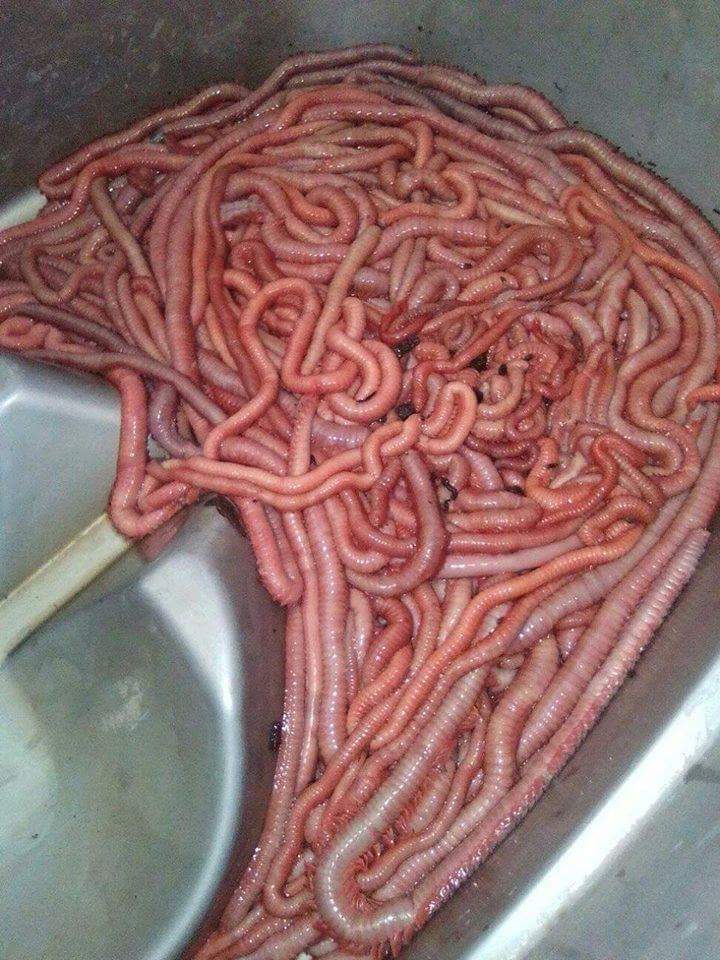
Pellet Lobster Wet grated corn and also other vegetables.Kakela shredded tree, Taouge, carrots, Plankton, Earthworms (before it is given, worms are deposited a day to remove impurities in the stomach of the worms)
Feeding ranging from pellets, vegetables, worms can be done alternately every day.
Harvesting Fresh Water Lobsters.
Freshwater lobsters are ready for harvest for the local market, at the age of 7 months, the calculation begins from the transfer of the seed to the main pond. At that age freshwater crayfish is ideal for harvesting, the ideal lobster weight harvested ranges from 90-100 grams to one tail. In the count of each kilo can contain 8-10 tail one kilo.
As for the export market, new lobsters can be harvested at 10-12 months of age weighing up to 150-200 grams per single tail, in a matter of one kilogram containing about 5-7 pounds a kilogram.
A little review on how to cultivate freshwater crayfish, may be something useful for you all.Thank you steemit do not forget follow and Upvote @muklis, to meet again with me @muklis in my experience that I write here.
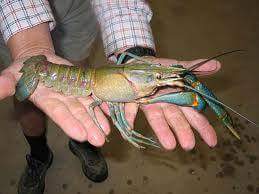

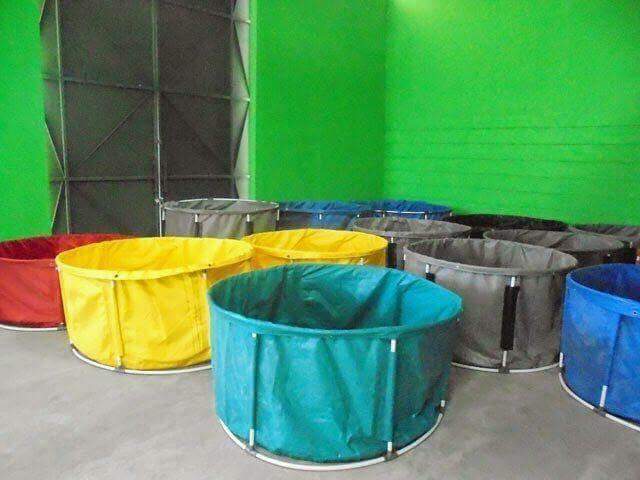

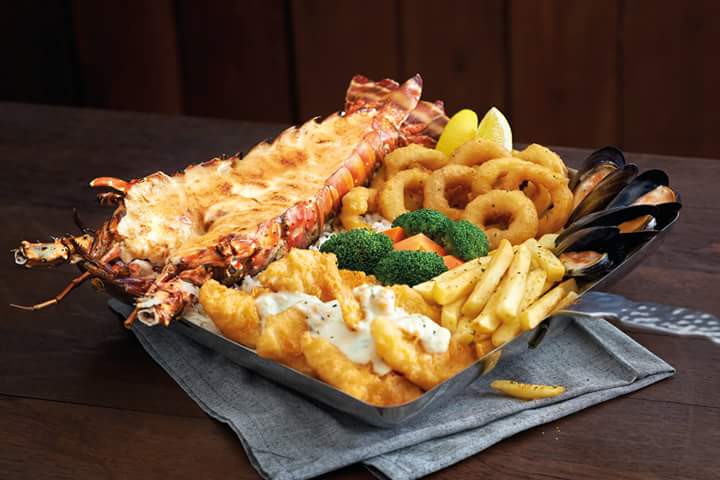

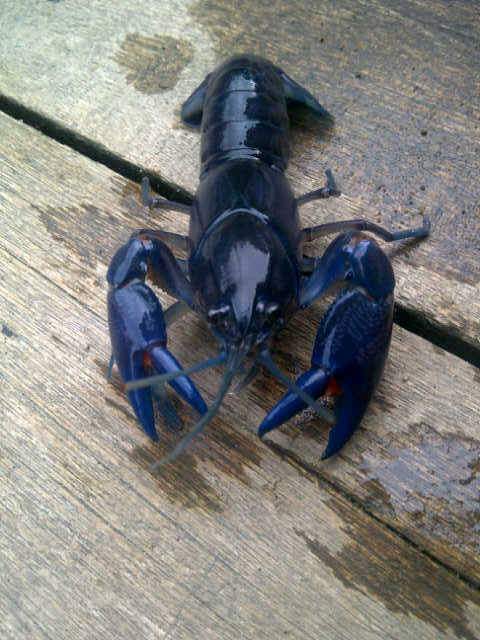

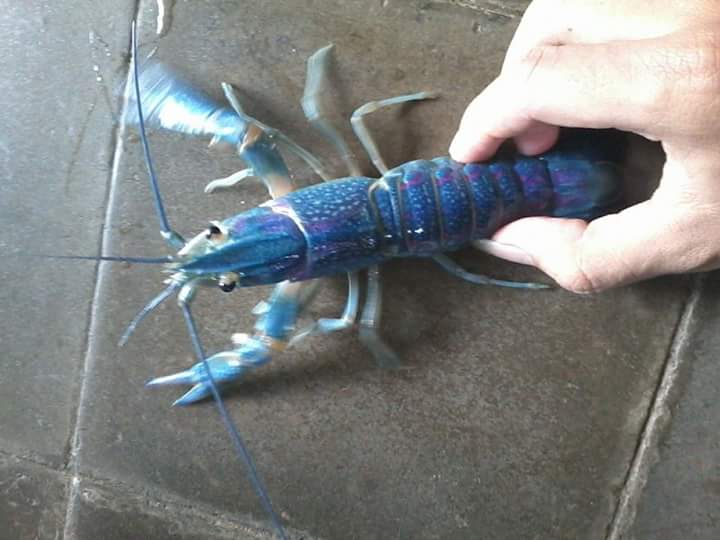

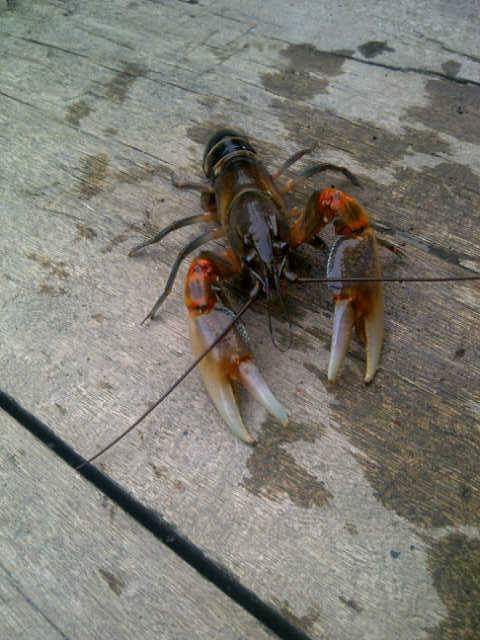

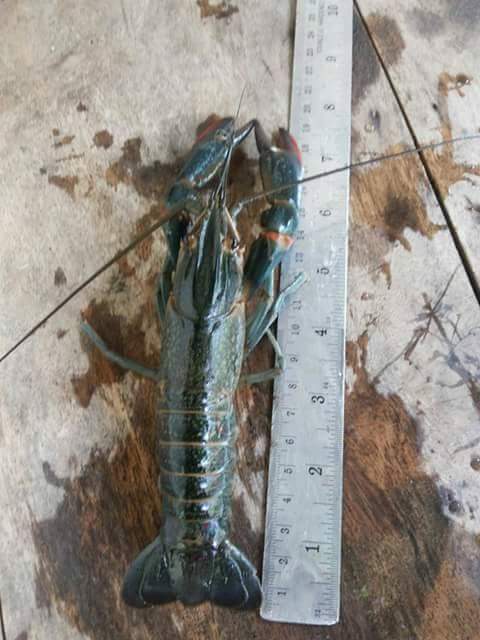

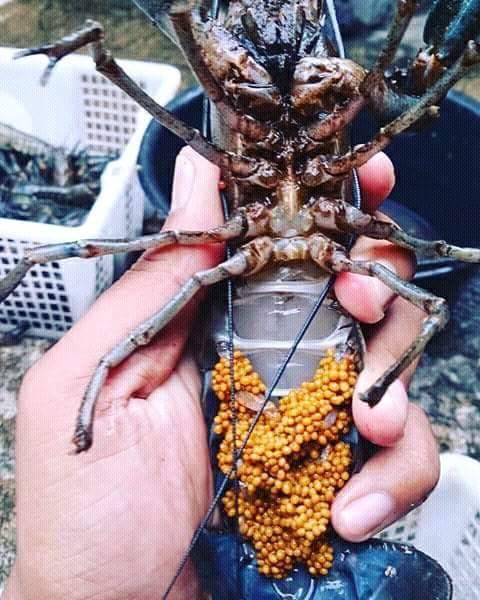

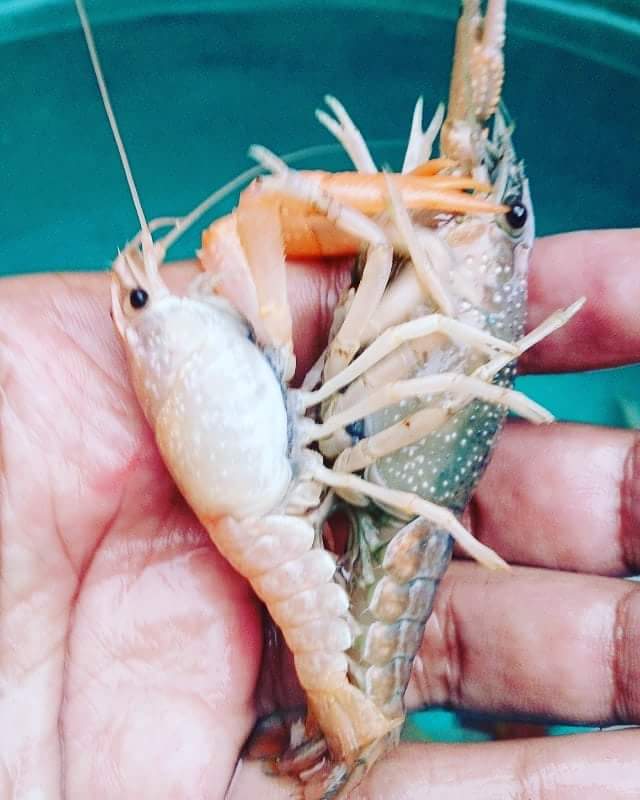


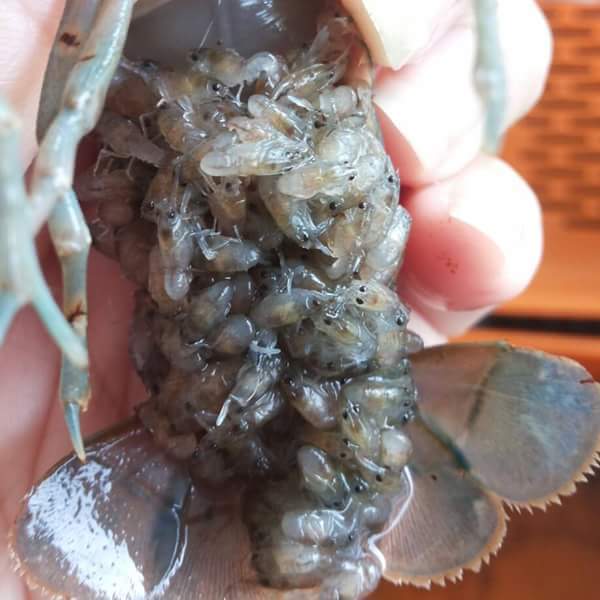

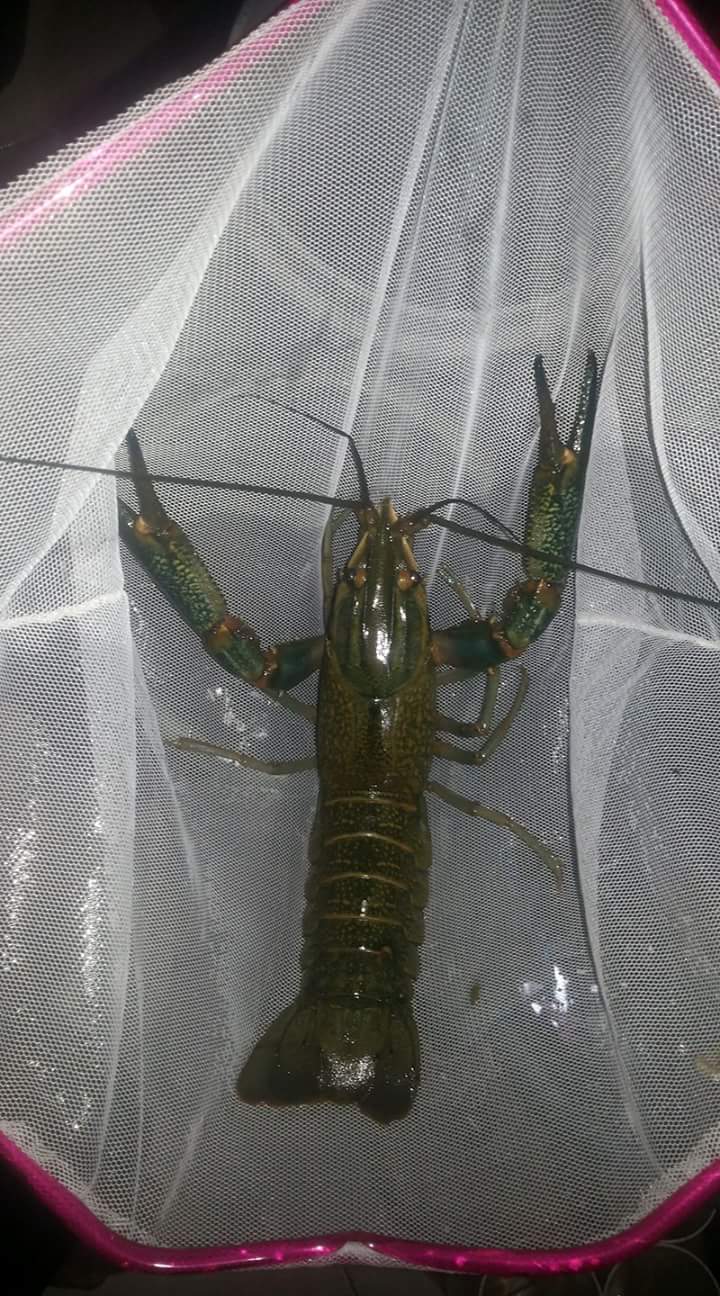

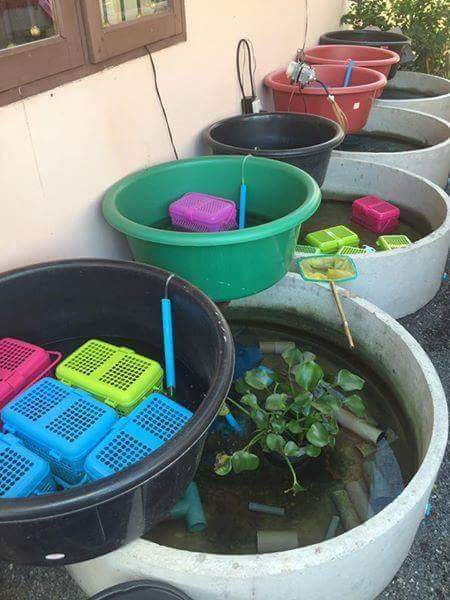

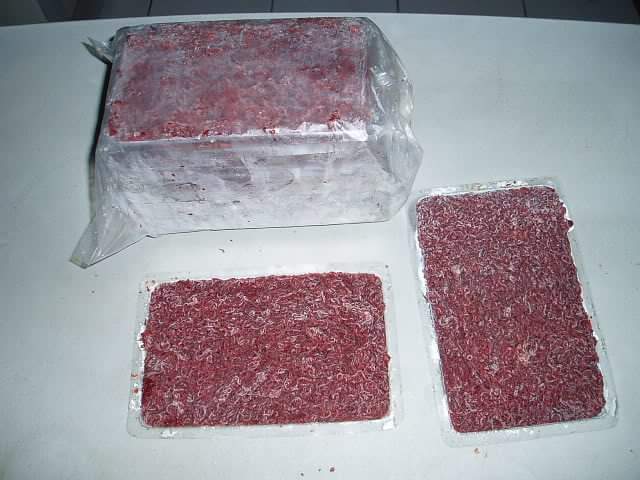

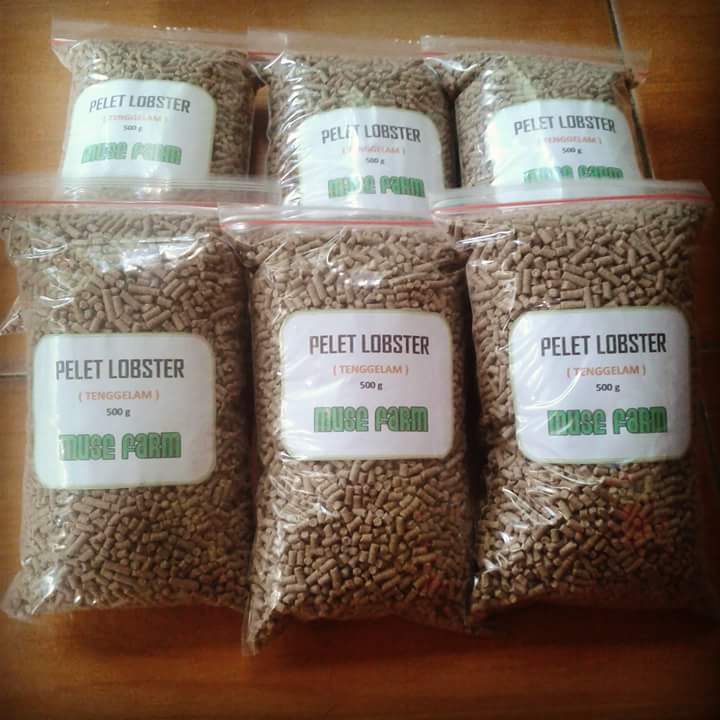

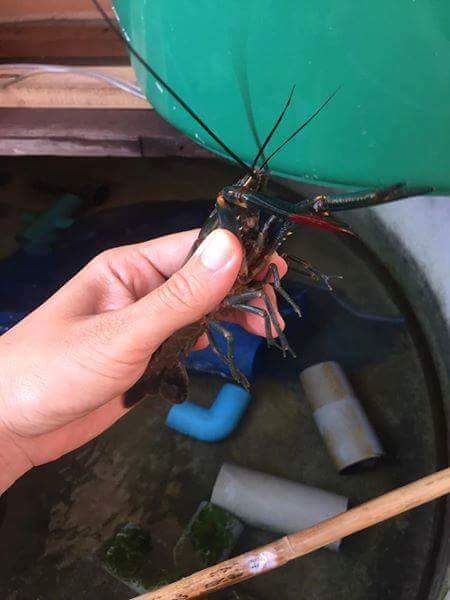


You have such a great post here, but can you reference the images which are not yours here to give your post more validity ?
I am very sure that this post is true, because after reading this post I look for references in google evidently there are others who also have been practicing this freshwater lobster breed.This is a reference for you
https://www.google.co.id/url?sa=t&source=web&rct=j&url=http://zionsilinggar.blogspot.com/2016/04/cara-budidaya-lobster-air-tawar-untuk.html%3Fm%3D1&ved=2ahUKEwin9OrKv9XYAhXEK48KHfqMB5kQFjAAegQIEBAB&usg=AOvVaw0OXmMj5ckrGRYih303uOBA
I am glad you did your research.. I am only laying more emphasis on some of the images he used which happen not to be his.
can you show that the proof that the image is not his? so that we all know the truth
Hai @ufxpression,if you say it is not my picture, can you give me real proof? forgive me beforehand a little rude to you.
a great post, I hope what you write is appreciated, because for me this person is so great and so detailed step by step, thank you @muklis has made a very good writing
@muklis
This is an awesome post, it is super interesting! What strain of crayfish is this that you are cultivating?
This type of freshwater crayfish is similar to the one in the ocean, its nutritional value and delicacy are almost the same, the most prominent distinction of one species of animal living in another is its size, the freshwater crayfish is smaller than the sea lobster
amazing